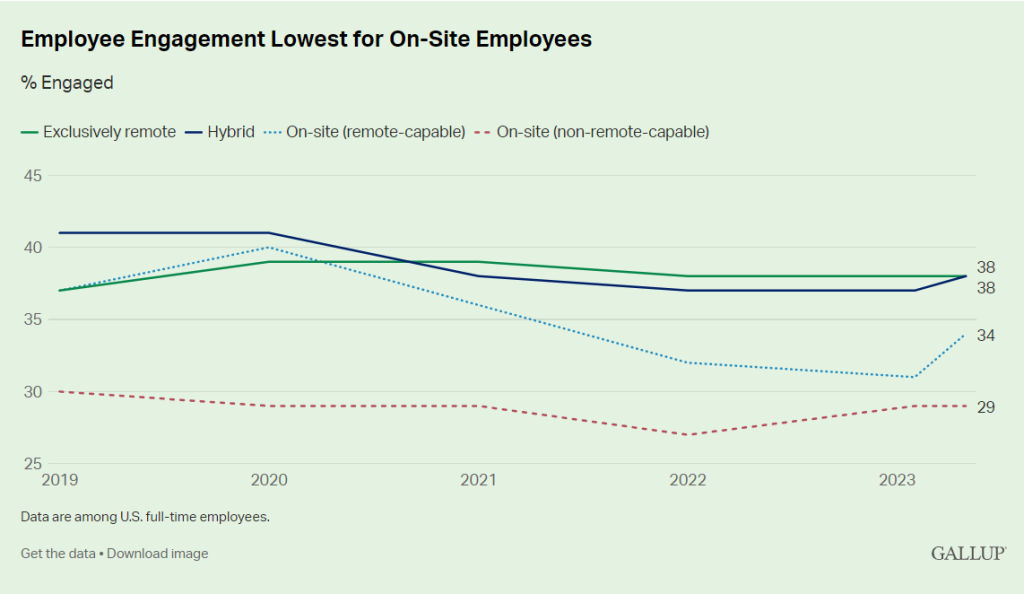Before the pandemic, when you started a business, the understanding was that your employees would come to the workplace. Remote or hybrid work was more the exception than the rule. However, the pandemic made on-site work difficult, if not impossible. Employers started experimenting with other work arrangements, many falling on full remote work.
A few months after the lockdowns started easing, employers sent out a back-to-work order. Unsurprisingly, many employees resisted it. Globally, about 65 percent of remote workers refuse to work on-site in 2021. In one survey of American workers, 26 percent of remote workers whose employers required them to work on-site refused to comply.
Given the current attitude toward flexible work arrangements, entrepreneurs might want to consider that. It is easy enough to register a company in Texas, for example, if you have a TX registered agent. However, getting people to work for you on-site might be a problem.
However, there is some hope for employers who want their workers on-site. The desire for flexibility is not all or none. A 2021 survey of employers and employees indicates the popularity of a hybrid working model. Most (63 percent) of high-growth companies are for it, and 74 percent of Gen Z employees agree.
However, the impact of a hybrid working model on security, employee productivity, and engagement is speculative at best. Some believe the drawbacks outweigh the benefits. Let’s first take a quick look at the different types of the hybrid working model and the pros and cons in general.
Image by tirachardz on Freepik
Different Hybrid Working Models
A hybrid working model is a customizable employment arrangement with a mix of on-site and remote work. The exact ratio depends on the employer’s policy to meet the goals and needs of the business or organization. As such, the hybrid working model may vary widely between organizations. However, there are some distinct types.
Fully flexible
A fully flexible hybrid arrangement allows employees to choose when and where to perform their duties. They can choose to work on-site some days and at home or anywhere else on other days. Some can choose to work exclusively on-site or offsite. This hybrid work type focuses on output instead of hours worked. The arrangement provides full autonomy to the employee.
Split week
The split-week model requires employees to work on-site for set hours on specific days. Some companies may allow employees to choose which days, but they must comply with the schedule they set. That establishes a routine when employers and employees can schedule meetings and other face-to-face interactions. The days workers must work on-site may be anywhere from one to three times a week.
Hub-and-spoke
An interesting model is the hub-and-spoke, where the business has a central office (hub) and working locations in other areas (spokes). The spokes provide employees who may live some distance away from the hub somewhere to work. With this model, employees may also choose to work at home or in workspaces. Employers may use the hub-and-spoke model with split week and fully flexible types.
Rotation
Some organizations work well with teams working in rotation on-site and remotely. For example, the HR team must all be on-site for week one but not the rest of the month. The IT team must report to on-site work only for week two, and so on. The purpose of the rotation is to allow all teams to schedule regular in-person collaboration while maintaining a smaller office.
The appropriateness of different hybrid working models depends on the nature of the work and the needs and goals of the organization. However, hybrid working models typically have similar pros and cons. Let’s start with the pros.
Pros of Hybrid Working Models
Some managers are still skeptical about giving employees the flexibility of hybrid work. However, numerous studies support the viability of giving workers more freedom.
Improved performance
A University of Birmingham study collected data from 597 managers. It shows that most agree that flexible working arrangements improve employee performance. More than half agree that it improved their concentration (51.8 percent), increased productivity (59.5 percent), and increased motivation (62.8 percent).
An experiment involving 1,612 Trip.com employees yielded somewhat similar results. Researchers gave some a hybrid work schedule where they could work from home twice a week while others worked on-site full-time. Employees on a hybrid schedule took fewer leaves and performed just as well or better than those working in the office daily. The flexible arrangement also increased employee satisfaction and reduced attrition rates by 33 percent.
A significant factor in both studies is the willingness of management to redefine their key performance indicators. Instead of looking at hours worked, they measured the employees’ achievements. The implicit trust placed on the employees may also have contributed to increased engagement.
Lower costs
Employees benefit directly from hybrid working models regarding commuting costs, vehicle maintenance, and miscellaneous expenses such as meals. One report indicates that, on average, workers save $19.11 daily in commute costs. About one-third claim savings of $5,000 a year.
Employers also benefit. With fewer employees using office resources, employers needed less space and fewer supplies. Add to that lower water and electricity consumption, and the savings could mount up considerably. One report claims that employers pay about 40 percent less on overhead with hybrid working models, primarily due to reduced employer-to-desk ratios.
Higher employee engagement
A Gallup poll found that employees in a fully remote and hybrid work arrangement tied for the highest engagement rate (38 percent). On-site employees had the lowest engagement rate at 29 percent.
Source: Gallup
Another survey provides more dramatic results. Owl Labs research indicates that most (74 percent) workers feel happier working remotely in 2022 for various reasons. Half of the survey participants report being willing to get less money if they could work remotely. About a fourth (23 percent) are willing to take a 10 percent pay cut.
Work-life balance
One of the issues remote workers might have with fully remote work arrangements is isolation. Many people felt that during the lockdown. However, the hybrid work model might be the answer to changing perspectives post-pandemic.
Hybrid working models allow employees to spend more time at home and still have in-person interactions with colleagues. In the Gallup poll, most (71 percent) hybrid work employees report improved work-life balance as a top benefit of the arrangement. More than half (58 percent) also claim less burnout or fatigue. Some (17 percent) also have a better working relationship with coworkers.
Cons of Hybrid Working Models
Hybrid workplaces have apparent advantages for employers and employees. However, there are some disadvantages as well.
Possible isolation
The hybrid workplace reduces the amount of in-person contact with coworkers, which may weaken feelings of comradeship. Depending on the model and policy, some coworkers may never see each other physically. Reducing physical presence in the workplace may leave some workers disengaged and unheard, especially marginalized groups.
Reduced collaboration
Despite the plethora of apps and tools to facilitate communication, some workers may struggle to collaborate effectively with others. They prefer the convenience of on-site work so they can be face-to-face with their coworkers when bouncing ideas off them. Aside from weakening the bonds that hold teams together, the lack of face-to-face interaction may also lead to poor business decisions.
Increased security risks
Security breaches and data loss are likely higher when working from home. Most companies secure their servers by limiting access, implementing strict and layered authentication protocols, and updating their software.
However, hybrid workers conduct business online, typically through unsecured lines. They also use laptops to store sensitive information about the company, which someone else, such as a spouse or child, could use. Laptops are also easy to steal, which can lead to serious consequences for the company.
Taking the Good With the Bad
The trend is toward more companies moving to a hybrid working model when the work allows it. Most people today would not consider positions that do not offer workplace flexibility. However, employers and human resource managers must consider flexible work arrangements in the context of the company’s goals and needs.
When implementing hybrid working models, people managers must establish policies and procedures to enhance the pros and mitigate the cons. It takes more work initially, but the long-term cost-savings and improved employee engagement are well worth it.








Leave A Comment